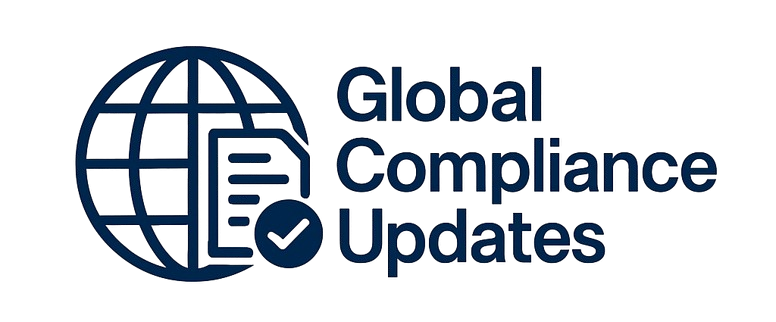High-risk customer reviews have been a requirement since the first FFIEC Examination Manual was published in 2005. Recent guidance for Customer Due Diligence/Enhanced Due Diligence (CDD/EDD) further defines the expected approach for institutions to properly identify and evaluate high-risk customers. The regulators do not, however, detailed the day-to-day approach required to meet the required customer monitoring.
WHY SHOULD YOU ATTEND?
This presentation will provide the practical steps you can use to enable your institution to meet both the letter and spirit of the law and regulation related to identifying and monitoring high-risk customers. Learning from real-world audit issues, the presentation will cover what many financial institutions are doing incorrectly and what they should be doing instead to monitor these high-risk customers.
AREA COVERED
- Background related to the need for information about high risk customers
- FFIEC guidelines for determining high risk customers
- FinCEN expectations for a good high risk customer program
- Items to include in your high risk program
- Current issues related to the high risk process
- Recent enforcement actions addressing weak high risk programs
LEARNING OBJECTIVES
- An overview of FinCEN, FATF, and other financial regulatory requirements.
- Defining and clarifying the written requirements of the spirit of the law.
- Three common mistakes financial institutions make when identifying high-risk customers.
- How to ensure existing and new high-risk customers are identified properly.
- How to conduct high-risk customer reviews that have tangible benefits for your BSA Program.
- Real-life examples of high-risk customer reviews with tips on how to use these reviews for a financial institution’s environment.
- How to avoid examiner and regulator criticism regarding high-risk customer reviews.
WHO WILL BENEFIT?
- Account opening staff
- Risk managers
- BSA/AML Officers
- Compliance Officers
- BSA/AML Audit staff
This presentation will provide the practical steps you can use to enable your institution to meet both the letter and spirit of the law and regulation related to identifying and monitoring high-risk customers. Learning from real-world audit issues, the presentation will cover what many financial institutions are doing incorrectly and what they should be doing instead to monitor these high-risk customers.
- Background related to the need for information about high risk customers
- FFIEC guidelines for determining high risk customers
- FinCEN expectations for a good high risk customer program
- Items to include in your high risk program
- Current issues related to the high risk process
- Recent enforcement actions addressing weak high risk programs
- An overview of FinCEN, FATF, and other financial regulatory requirements.
- Defining and clarifying the written requirements of the spirit of the law.
- Three common mistakes financial institutions make when identifying high-risk customers.
- How to ensure existing and new high-risk customers are identified properly.
- How to conduct high-risk customer reviews that have tangible benefits for your BSA Program.
- Real-life examples of high-risk customer reviews with tips on how to use these reviews for a financial institution’s environment.
- How to avoid examiner and regulator criticism regarding high-risk customer reviews.
- Account opening staff
- Risk managers
- BSA/AML Officers
- Compliance Officers
- BSA/AML Audit staff
Speaker Profile
 Thomas Nollner
Thomas Nollner
Thomas E Nollner has more than 35 years of experience in financial institution supervision and consulting. Mr. Nollner spent 30 years as a National Bank Examiner for the Comptroller of the Currency where he was a safety and soundness examiner and a compliance examiner. As a safety and soundness examiner he examined national banks for capital adequacy, asset quality, management issues, earnings concerns, and liquidity funding. As a compliance examiner, he examined national banks for compliance with consumer laws and regulations such as the Truth-in-Lending Act, the Real Estate Settlement Procedures Act, the Flood Disaster Protection Act, the Community Reinvestment …
Upcoming Webinars

ChatGPT and Project Management: Leveraging AI for Project M…

Workplace Investigations 101: How to Conduct your Investiga…

Project Management for administrative professionals

The Monte Carlo Simulations in Excel for Risky Investments

Onboarding is NOT Orientation - How to Improve the New Empl…

Dealing With Difficult People: At Work & In Life

Transform Data into Insights: A Beginners Guide to Excel Pi…

Construction Lending And Real Credit Administration: Evalua…

Understanding Accounting for non - Accounting professionals

Harassment, Bullying, Gossip, Confrontational and Disruptiv…

New Form 1099 Reporting Requirements: 2025 Compliance Update

Human Error Reduction Techniques for Floor Supervisors

HR Metrics and Analytics 2025 - Update on Strategic Plannin…

Treating Employees Like Adults: Discipline versus Empowerme…

7 Ways To Beat Burnout: Without Quitting Your Job


How to Write Procedures to Avoid Human Errors

Handbook Overhaul 2026: Compliance, OBBB Act & Beyond

FDA Proposes Framework to Advance Credibility of AI Models

Ethical Terminations: Navigating Employee Exits with Legal …

Understanding EBITDA – Definition, Formula & Calculation

Project Management for Non-Project Managers - Scheduling yo…

4-Hour Virtual Seminar on Hidden Secrets of Selling & Marke…

Validation Statistics for Non-Statisticians

Data Integrity and Privacy: Compliance with 21 CFR Part 11,…


The Alphabet Soup: When the FMLA, ADA, COBRA, and Workers' …

Talent Management: How to Leverage AI and ChatGPT Tools for…


Offboarding with Care: Conducting Legal & Ethical Employee …

2-Hour Virtual Seminar on How to Conduct an Internal Harass…

Payments Fraud Detect & Prevent Check, ACH and P-Card Schem…

Managing Toxic & Other Employees Who have Attitude Issues



Reduce Stress in the Workplace: Effective Ways to Handle Co…





Excel - Pivot Tables - The Key To Modern Data Analysis and …
